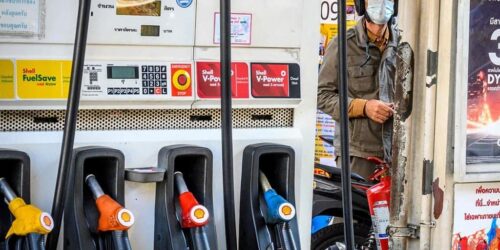Inflation concerns in Islamabad are getting more and more obvious by the day. Petroleum prices were reduced for the first time since mid-November 2020. A 2.6 percent decrease in benchmark Arab light crude oil coupled with 1 percent appreciation in rupee – over the previous fortnight, made it easier for the government to reduce petrol and HSD prices by 1.4 and 2.6 percent, respectively.
This was also the first instance since mid-November 2020 where the base price for petrol reduced over a fortnight. The previous such instances of reduction in base price have almost always been met with maintaining the retail price, at the same time increasing the Petroleum Levy, throughout this government’s tenure.

Recall that the PL was slashed to 2-year low on both petrol and HSD last month, as the government buckled under pressure of rising oil prices. There are clear early signs that the government has made peace with letting go of the PL opportunity for the remainder of the fiscal year, having earlier maximized the opportunity on offer. April price revision has also seen the long overdue upward revision of 5.7 percent in OMCs’ and dealers’ margin, after December 2019.
Petroleum consumption numbers will be out soon, but in all likelihood, March 2021 PL collection will not exceed Rs20 billion, lowest since December 2018. Recall that petroleum prices had started to fall from April last year, as crude oil plummeted owing to Covid. This will bring in the base effect into play and will make it more difficult for the government to increase prices, if keeping prices lower year-on-year is the objective.

With restriction on movements back in one form or another to varying degrees, another round of depressed demand cannot be ruled out. Remember that smuggling of petroleum products is still rampant in the country, and the recent inquiry report put the losses estimate to Rs300 billion. That may well be exaggerated, but it does provide a sense of direction, that more effort towards curbing smuggling could yield the desired result of maintaining lower prices, while at the same time augmenting revenues.
All eyes will be on the PL target in the upcoming budget, which was set at Rs450 billion for FY21, and is increasingly unlikely to be achieved now. Pakistan’s correspondence with the IMF authorities had earlier assumed PL target growing at over 20 percent every year, which may need revision come budget. Whether or not the desire to keep prices low also trickles to other sectors such as gas and power, will be known soon, and could offer a glimpse of what the future holds.





